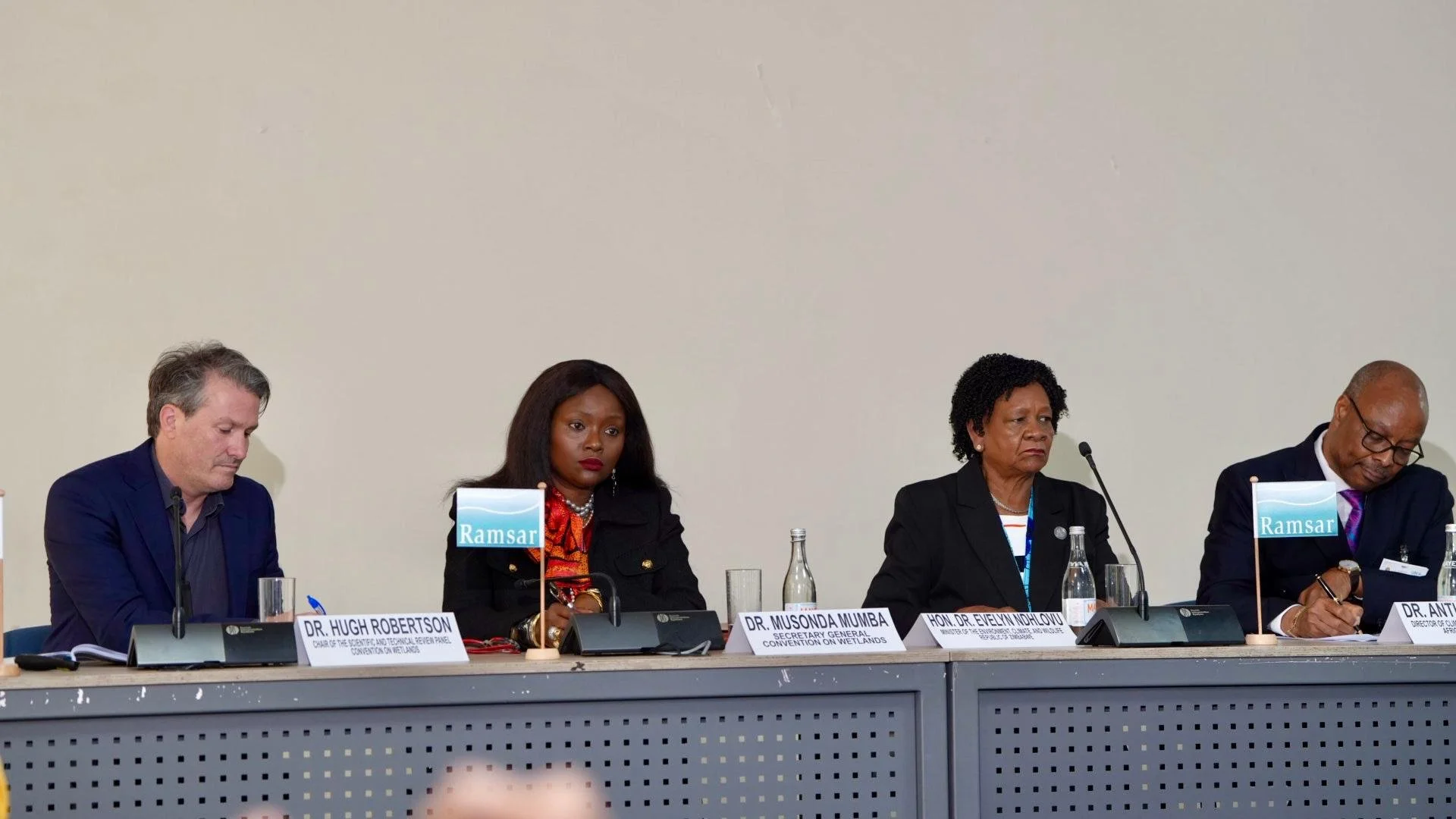VANISHING WETLANDS THREATEN $39 TRILLION IN GLOBAL BENEFITS, NEW REPORT WARNS
Global Wetland Outlook 2025, launched today at ongoing AMCEN talks in Nairobi, warns that, between 1970 and today, 22 per cent of wetland areas have been lost, or the equivalent of over half a billion football pitches, and one in four remaining wetlands are already in poor ecological condition
The world is on track to lose wetlands worth up to $39 trillion by 2050, a new report launched at the 20th session of the African Ministerial Conference on Environment in Nairobi, Kenya warns.
The Global Wetland Outlook 2025 (GWO2025) report comes just days before African leaders gather for the fifteenth edition of Conference of the Parties to the Ramsar Convention on Wetlands (COP15), scheduled for Victoria Falls, Zimbabwe from July 23 to 31, 2025.
It reveals that, although wetlands cover just six per cent of Earth’s surface, they deliver services worth more than 7.5 per cent of global GDP, including water purification, flood protection, food production and carbon storage. The report blames this decline on land conversion, pollution, infrastructure, and climate change. Latin America, the Caribbean, and Africa are seeing the steepest recent losses, it notes.
Issued by the Secretariat of the Convention on Wetlands (Ramsar Convention), the GWO2025 is the most comprehensive global assessment of wetlands to date and serves as a sobering call to action ahead of COP15, said Dr Musonda Mumba, Secretary General of the Convention.
“Wetlands bankroll the planet, yet we’re investing more in their destruction than their recovery,” she said, adding. “We’re sitting on a $10 trillion opportunity; restoring wetlands can unlock vast benefits, but time is running out.”
Yet, the report warns, between 1970 and today, 22 per cent of wetland areas have been lost, or the equivalent of over half a billion football pitches, and one in four remaining wetlands are already in poor ecological condition.
“At our current rate of loss, which is 0.52 per cent per year, we stand to lose one fifth of the world’s remaining wetlands by 2050,” said Dr Musonda Mumba, Secretary-General of the Convention on Wetlands. “This represents up to $39 trillion in benefits at risk, not to mention the livelihoods of billions who depend on these ecosystems.”
Drawing on the latest scientific and economic data, the GWO2025 outlines four pathways to reverse wetland decline and unlock a “$10 trillion opportunity” through restoration. These include integrating wetland values into infrastructure and land-use planning; treating wetlands as critical components of the global water cycle; embedding them in innovative financing mechanisms such as resilience bonds and carbon markets; and mobilising public and private funding for on-the-ground action.
The report also discusses successful case studies from around the globe. In Zambia’s Kafue Flats, a $300,000 restoration project revived seasonal flood regimes and controlled invasive species. Today, more than $1 million a year safeguards water systems and supports artisanal fisheries valued at $30 million annually. Meanwhile, the East Asian–Australasian Flyway initiative has mobilised $3 billion in blended finance to restore priority wetlands that sustain 50 million migratory waterbirds and nearly 200 million people.
Despite these successes, the report’s authors caution that prevention remains far cheaper than restoration, which can cost between $1,000 and $70,000 per hectare, depending on ecosystem type, and that sustained political will and financing are urgently required.
“With 172 contracting parties and over 2,500 designated Ramsar sites, the Convention on Wetlands offers the framework for global cooperation,” said Dr Hugh Robertson, Chair of the Convention’s Scientific and Technical Review Panel. “Now is the time for policymakers, investors and practitioners to transform ambition into action, before the world’s wetlands and the services they provide are irrevocably lost.”
(The GWO 2025 is available in English, French and Spanish at www.ramsar.org/launch-global-wetland-outlook-2025.)

